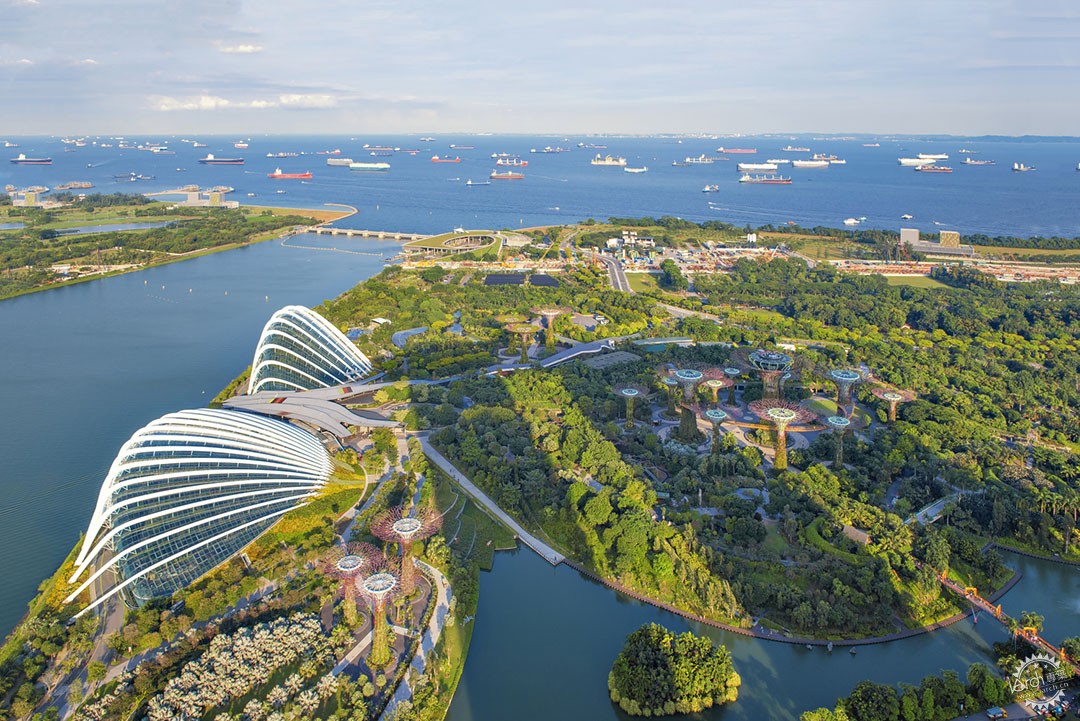
Image © IamDoctorEgg/Shutterstock
如何以水回应沿海城市的土地开垦问题
How Water Responds to Land Reclamation in Coastal Cities
由专筑网Zia,小R编译
填海造地已成为沿海开发中的流行现象,它是解决沿海地区土地需求的优先方案,并已有各种领域的实施案例,比如防洪和农业。如今,它已成为应对沿海城市化、经济活动和全球人口快速增长的发展对策,中国和荷兰在填海的土地面积上处于领先地位。然而,今天大多数填海项目都发生在全球南部的城市中心。西非、东亚和中东的城市将这些新土地作为其商业产业的经济先驱,并用作豪华住宅的场地。
但填海造地的设计和生产与海洋环境之间的关系是复杂的,它需要与水体建立共生关系以保持稳定,但如果疏忽这些,只是将土地强加给海洋,会激起自然的反抗。海洋包括潮汐积累、海平面上升、与湿地的联系和水生生物多样性,在不同的背景下会影响填海造地项目的成败。
几个世纪以来,人们在不同的环境中使用各种方法进行土地开垦。传统上,城市采用堤坝来围住浅水区,并在围住的地方排水以创造旱地。这方面的一个例子是荷兰的Zuiderzee。在20世纪,大坝建在北海,将水排走,以创造土地来容纳其不断增长的人口。现在则有更多的具体做法,如直接在海洋环境中深层搅拌水泥和建造海墙,这些做法已经实施。中国的中新天津生态城是这种现代做法的大规模实例,为住房、工业项目和港口设施生产了6.2英里的土地,促进了其城市发展和经济。
Land reclamation from the sea has become a popular phenomenon in coastal development. It is the most preferred solution to the need for land in coastal areas and has been implemented for various use cases, including flood control and agriculture. Nowadays, it has become a famous urban response to the rapid increase in coastal urbanization, economic activity, and global population. Countries like China and the Netherlands lead the chart on the amount of land area reclaimed. However, most reclamation projects today take place within urban centers in the global south. Cities in West Africa, East Asia, and the Middle East produce these new lands as economic forerunners for their commercial industry and as platforms to house luxury residences.
But the relationship between the design and production of reclaimed lands and the response of water in ocean environments is complex. It requires a symbiotic relationship with water bodies for stability but can provoke natural forces when negligently imposed on the sea. Ocean water behaviors, including tidal accumulation, sea level rise, connection to wetlands, and aquatic biodiversity, can question the success or failure of land reclamation projects in different contexts.
Land reclamation has been practiced for centuries using various methods in different settings. Traditionally, cities employed dikes to enclose shallow waters and drain the enclosures to create dry land. An example of this is Zuiderzee in the Netherlands. In the 1900s, dams were built into the North Sea and the water was drained to create land for housing its growing population. In modern times, more concrete practices such as deep cement mixing directly in ocean environments and building sea walls to contain them have been implemented. The Sino-Singapore Tianjin Eco-city in China is a large-scale example of this modern practice, producing 6.2 miles of land for housing, industrial projects, and port facilities, boosting its urban growth and economy.
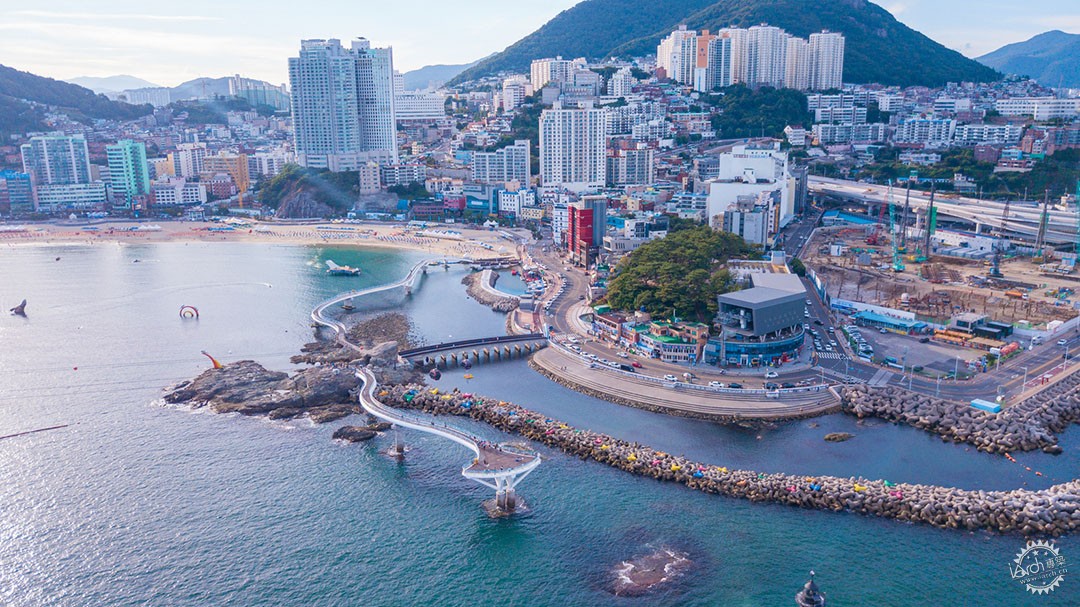
Image © Panwasin seemala/Shutterstock
填海造地尽管对城市有好处,其方法也在不断演变,但不可避免地会影响海洋环境的结构和行为。研究表明,填海会改变海洋环境的剖面形状、床面坡度和沉积物颗粒大小,影响当地的潮汐动态,如振幅、不对称性和潮汐流。当自然洋流受阻时,水通过加强波浪作用和潮汐找到自己的方向,在额外的力量下就会向新的方向转变。这是水对填海造地的自然反应,它决定了填海项目的结果、环境影响和可持续性。
Coastal reclamation, despite its benefits to cities and the evolution of its methods, will inevitably impact the structure and behavior of ocean environments. Studies have shown that reclamation can alter the profile shape, bed slope, and sediment grain size of ocean environments, influencing local tide dynamics such as amplitude, asymmetry, and tidal currents. When natural ocean currents are obstructed, water finds its way by enhancing wave action and tides, naturally shifting in a new direction with extra force. This is the basis for water's response to land reclamation, and it determines the success, environmental impact, and sustainability of a land reclamation project.
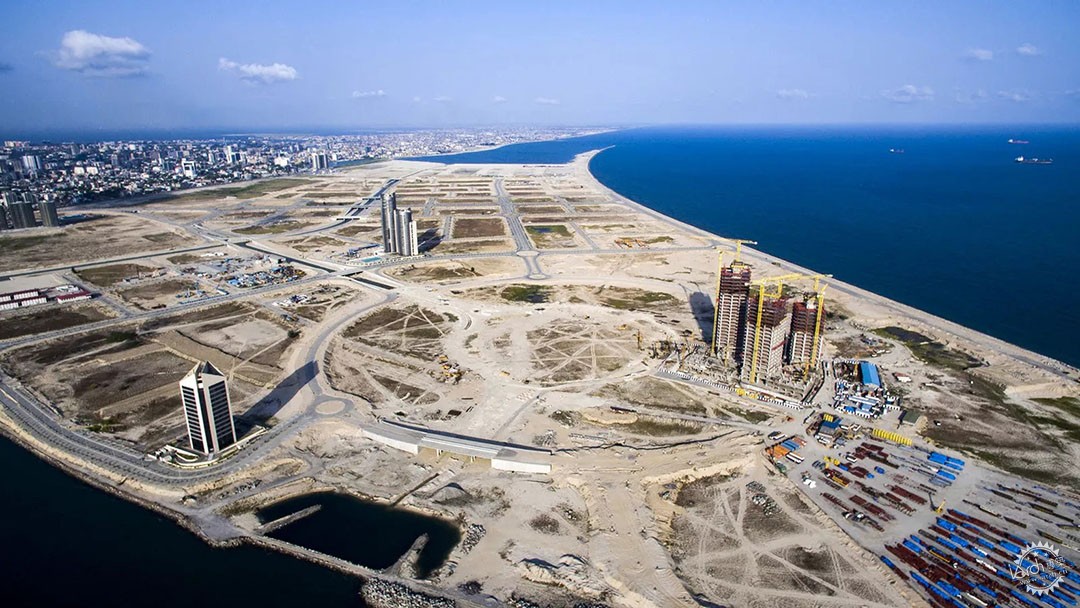
Image © Eko Atlantic city
例如,韩国的海洋城市釜山,是填海造地的成果。这里有三面临海的城市现状,是豪华住宅高楼的所在地。该城市建于上世纪80年代,四面都有海堤保护。然而,这个项目不仅改变了海岸线的形状,还将硬土地(混凝土和沥青)引入海洋,使城市更容易受到大型风暴和海平面上升的影响。在过去的十年里,这座海洋城市经历了一系列的台风,导致海浪溢出海堤,淹没街道。
另一个例子是尼日利亚拉各斯的Eko大西洋城,这个填海项目被设想为一种城市解决方案,以保护文化之都免受洪水、侵蚀和海平面上升的影响。通过对附近的海底进行疏浚,收集的土壤被用来填埋10.2公里的土地,这些土地面向大西洋。这里的边界是8.2公里的海堤,并计划容纳高层住宅项目,以维持城市不断增长的人口。然而,这个填海项目也对环境产生了负面影响,它消除了以前作为沿海地区和海洋之间的缓冲区的湿地,并改变了流向周围地区的水流,导致该市这些地区的水土流失加剧。此外,海底被疏浚的沿海地区目前很容易受到风暴潮的影响,多年来经历了连续的洪水。这些例子表明,对海洋水缺乏敏感度,填海造地项目的设计不足,会对环境产生长期的负面影响。
For instance, Busan, South Korea's marine city, is a result of coastal reclamation. It has an urban shape that faces the sea on three sides and is home to luxurious residential high-rises. Built in the 1980s, the city is protected by a seawall on all sides. However, this project not only alters the shape of the coastline but also introduces hard land (concrete and asphalt) into the ocean, making the city more vulnerable to large storms and sea-level rise. In the last decade, the marine city has experienced a series of typhoons that caused waves to spill over the seawalls and flood its streets.
Another example is the Eko Atlantic City, Lagos, Nigeria. Interestingly, this reclamation project was conceived as an urban solution to protect the cultural capital from flooding, erosion, and rising sea levels. Through the dredging of nearby ocean floors, the soil was collected to reclaim 10.2km of land facing the Atlantic. It was bordered by an 8.2km seawall and planned to accommodate highrise housing projects which will sustain the city’s growing population. However, this land reclamation project also had negative environmental implications. It eliminated the wetlands, which previously served as a buffer between coastal areas and the ocean, and changed the water flows to surrounding areas, leading to greater erosion in those parts of the city. Additionally, the coastal areas where the ocean floors were dredged are currently vulnerable to storm surges and have experienced successive flooding over the years. These examples demonstrate that a lack of sensitivity to water behavior and inadequate design of land reclamation projects can have long-term negative effects on the environment.
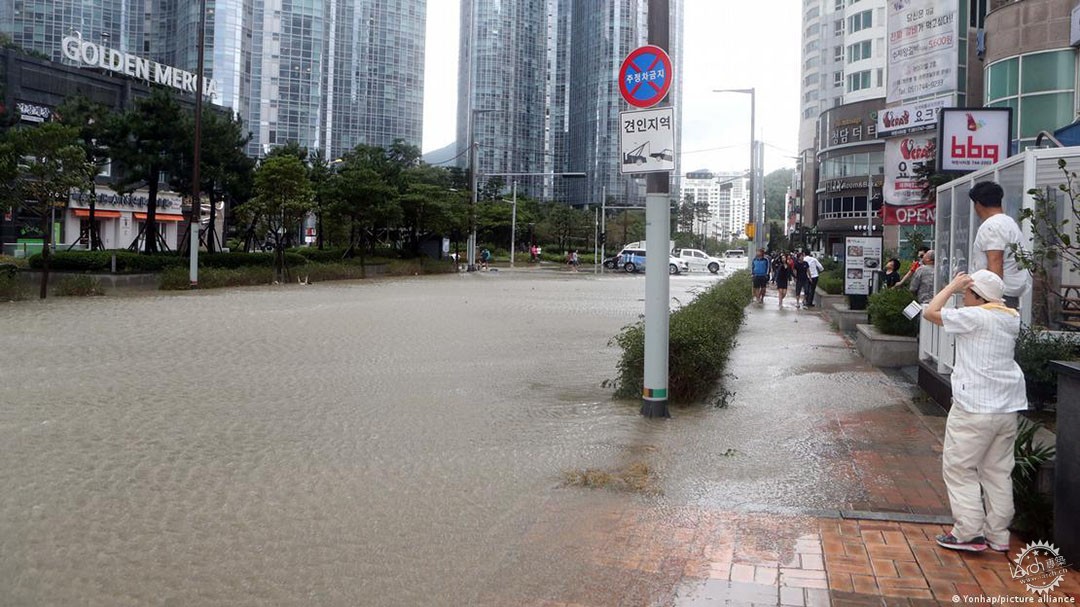
Image © Yonhap/picture alliance
从积极的角度来看,中国上海的填海计划注意到了现有的海岸条件,并对海洋水的行为做出了反应。通过建设海堤和疏浚的填海技术,自1985年以来,上海在海岸线上增加了超过580平方公里(220平方英里)的土地。虽然大部分新增的土地用于港口、工业和住房,以促进城市的发展,但也有很大一部分规划为公园、森林、内陆湖泊和湿地。城市设计经过精心规划,考虑到海水对建筑障碍物的反应,以及湿地作为海洋和土地之间的缓冲区的作用,这有助于吸收大部分海洋的力量。尽管这里被认为是一个容易受到洪水和未来气候变化影响的城市,但上海还是采用了敏感的土地开垦做法来减轻对海洋的影响。
In a positive light, the land reclamation scheme of Shanghai, China, is one that notes existing coastal conditions and responds to water behavior. Through reclamation techniques of building seawalls and dredging, the city has added well over 580 square kilometers (220 square miles) of land to its shorelines since 1985. Although most of the added lands were intended for ports, industry, and housing to fuel the city's growth, a significant portion was also designated for parks, forests, inland lakes, and wetlands. The urban design was carefully planned to consider the ocean water's response to built obstructions and the role of wetlands as a buffer between the ocean and the land, which helps absorb much of the ocean's force. Despite being identified as a city vulnerable to flooding and future climate change, Shanghai has employed sensitive land reclamation practices to mitigate the ocean's impact.
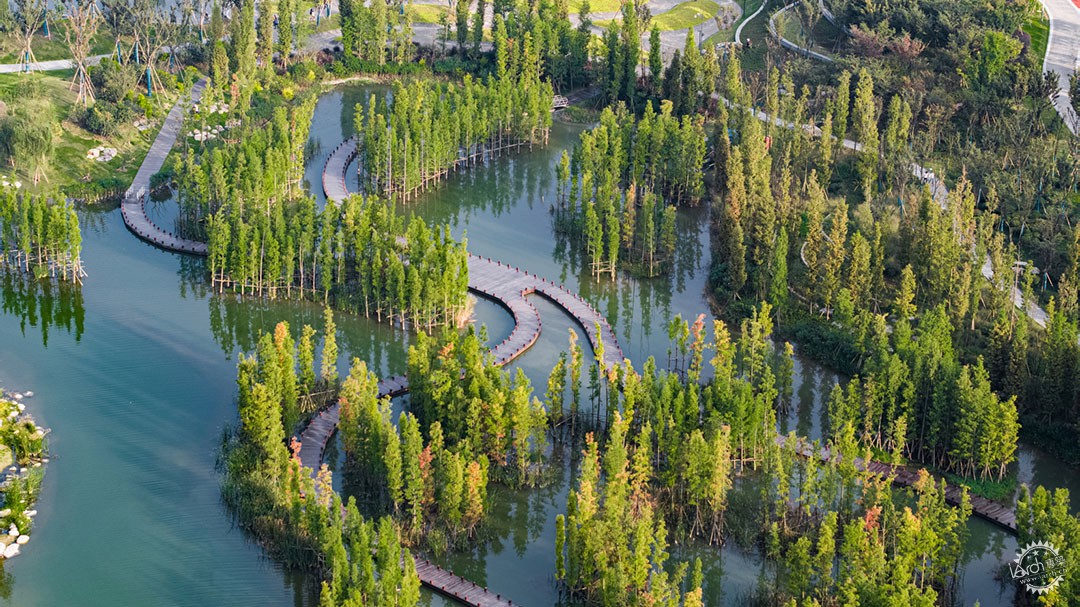
Image © BLVD International
通过这些不同的填海例子可以看出,沿海因素,如湿地、海岸线的形状、海床的结构和当地的潮汐动态,都有助于填海造地项目的可持续性。消除湿地的自然洪水侵蚀系统会导致更多的洪水,一个地方的洪水会找到新的方向,可能会导致其他地方的洪水。湿地不仅是洪水和侵蚀的缓冲区,也是独特水生物种的栖息地。这些海洋生态区容纳了珊瑚礁、马蹄蟹、海草床和其他靠近海岸的物种,这些生物对海洋的食物链有重大影响,并控制其整体生物多样性,破坏它们会导致长期的生态灾难。因此,我们有责任维持它们的生长环境,不能为了适应填海造地项目而侵蚀它们的栖息地。
围绕海水对沿海地区土地设计和开垦反应的讨论已经日益增多,除了关注水的潮汐动态,我们还应该把这些地区看作是广大生态物种的家园。从决策海洋中的位置到海岸线设计、海洋生态保护、海洋结构、当地潮汐和湿地,填海造地项目的所有方面都必须仔细地审查,以创造更加可持续的沿海环境。
It is evident through these various reclamation examples, coastal factors such as the wetlands, the shape of the coastline, the structure of the ocean bed, and local tide dynamics all contribute to the sustainability of land reclamation projects. Eliminating natural flooding erosion systems of wetlands can lead to more flooding, and preventing flooding in one location can cause water to find a new direction, which can lead to flooding in other locations. Wetlands are not only buffers for flooding and erosion but also habitats for unique aquatic species. They are marine ecology zones that house coral reefs, horseshoe crabs, seaweed beds, and other species near the coast. These organisms have a major impact on the ocean’s food chain and control its overall biodiversity. Destroying them can lead to long-term ecological disasters. So, we have an environmental responsibility to sustain them and cannot eliminate their habitats to suit land reclamation projects.
The discourse surrounding ocean water's response to the design and reclamation of lands in coastal areas has expanded. In addition to paying attention to the tidal dynamics of water, we should view these areas as homes to vast ecological species. All aspects of land reclamation projects, from decision-making and location in the oceans to coastline design, marine ecology conservation, ocean structure, local tides, and wetlands, must be examined sensitively to promote a sustainable coastal environment.

Image © Albert Vecerka/ courtesy of Balsley/SWA and Weiss Manfredi
|
|
